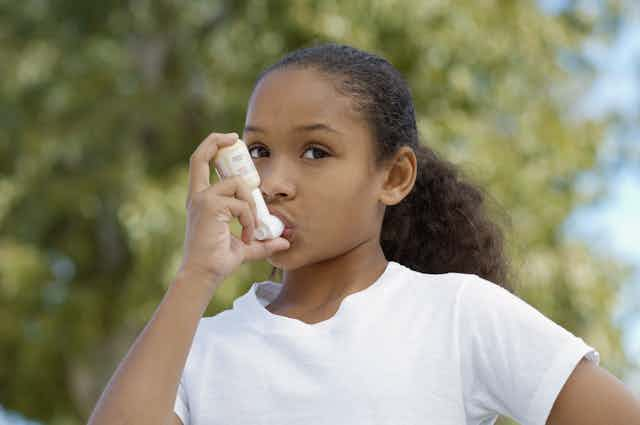Asthma is the most common chronic disease among children worldwide. Yet for many years children in high-income countries were thought to be those mainly affected. However, asthma studies from the past 25 years not only call this view into question, they shatter it.
In 1991 the International Study of Asthma and Allergies in Childhood began. For the first time, asthma was measured in the same way among children from 56 countries around the world to compare prevalence.
The findings, produced in three measurement phases over 12 years, were clear: many low- and middle-income countries had unacceptably high rates of childhood asthma and these were only growing.
Further analyses revealed that children living with asthma in low- and middle-income countries may have more severe symptoms. This could be due to many reasons, including widespread barriers to health care, overburdened health systems, and varied environmental exposures and social stresses.
Compounding this, reviews of existing evidence have challenged long-held hypotheses about the development of asthma. These have suggested that allergen exposure and hygienic environments, for instance, are less important than once thought. In addition, global comparisons suggest that some of the causes of asthma vary by region.
As a result, researchers are left asking not if asthma affects children in low- and middle-income countries, but who is most affected and why?
Uncovering patterns in South Africa
In our latest study, we delved into this question using data from 6,000 children in South Africa. The country is an excellent case study for understanding patterns in the prevalence and severity of childhood asthma. South Africa is estimated to have the world’s 25th highest prevalence of asthma symptoms among children, but the fourth highest rate of asthma mortality. This suggests serious problems with management and prevention of the disease.
Our data came from the Young Carers Study, which from 2009 to 2011 interviewed children aged ten to 17 from low-income health districts in Mpumalanga, KwaZulu-Natal and the Western Cape provinces.
Children reported whether they had ever had asthma and, if so, how many asthma attacks they had experienced in the past month. Those who had had more than one asthma attack in one month were classified as having severe asthma, similar to other studies.
As participants lived in multiple urban and rural sites, we could test whether urban areas have a higher prevalence of asthma, as many previous studies have shown. But we also investigated a unique variety of demographic, socioeconomic and psychological indicators, and their associations with having asthma and severe symptoms.
Our results showed that indeed a greater proportion of children in urban rather than rural areas were living with asthma. But when we added in other factors to our analysis, we found that children who had more anxiety and had been exposed to more community violence had higher rates of asthma.
Similarly, those with more depressive symptoms tended to have more severe manifestations of the disease. These findings suggest a “stress model” for asthma, where psychological and social stresses are related to both having the disease and more severe symptoms.
But we also found some varied effects between having asthma and severe symptoms. Children who lived in more severe poverty had lower rates of asthma, yet more often had severe symptoms when they were asthmatic. Partly explaining these effects, we saw that children who lived in severe poverty or rural areas completed more outdoor housework, which was related to lower rates of asthma.
Thinking about causes
How might psychological stress affect asthma? Why are urbanised lifestyles associated with the disease? Our cross-sectional study cannot indicate whether these factors caused South African children to develop asthma or severe symptoms. However, there are plausible biological explanations that suggest they should be further studied.
Psychological factors like depression and anxiety can affect the neural, endocrine and immune systems. This can increase inflammation and hyper-reactivity of the airways. These physiological changes may result in the expression of a genetic propensity towards asthma or worsen existing symptoms.
It is also possible that the causal pathway is reversed: living with asthma may increase anxiety and depression among children. However, a systematic review of cohort studies in high-income countries found that not only is psychological stress an outcome of asthma, it also seems to contribute to onset and severity.
If this is the case, the psychological stresses created by urban living, community violence and household poverty may contribute dangerously to the asthma burden among South African youth. In contrast, less urbanised lifestyles that, for one, tend to involve more agricultural work, may protect against asthma partly due to the microbial exposure they provide.
The causes of childhood asthma must still be untangled, ideally using studies that follow children from birth.
But it is clear that the social contexts of children living with and without asthma in South Africa differ in important ways.
Providing asthma medication is necessary but not sufficient – the psychosocial support these children may require should also be considered. Asthma research must continue to move beyond solely testing traditional biomedical causes in order to better inform prevention.

